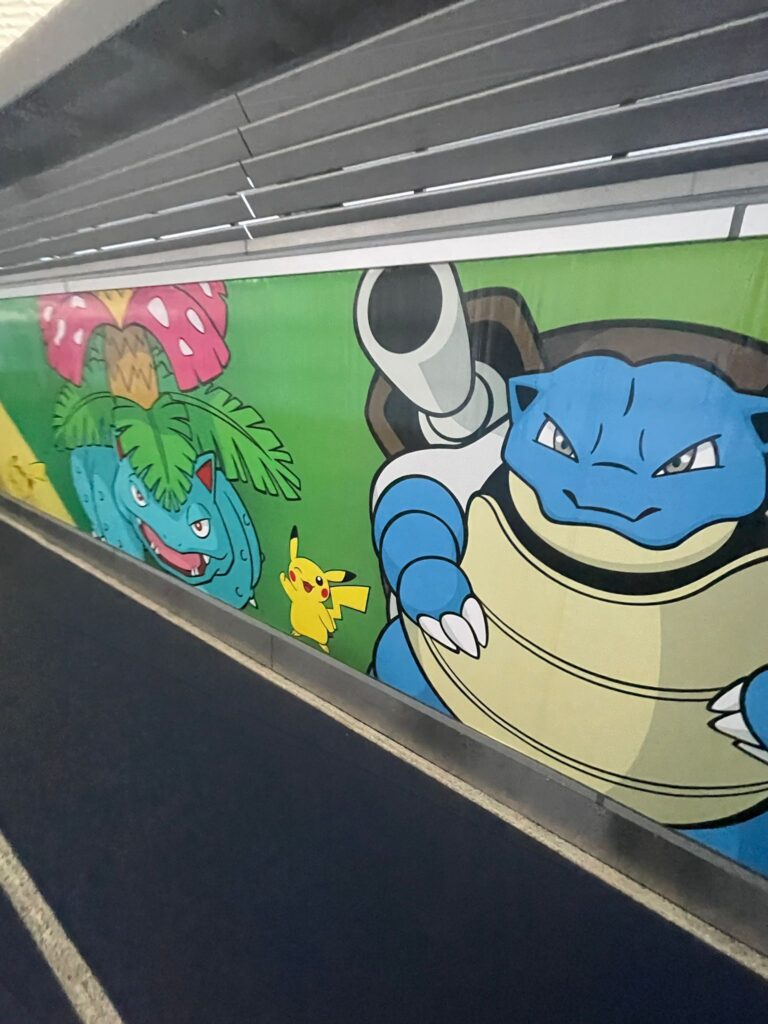Is Tokyo Worth Visiting?
Disclaimer: Some links on this page may be affiliate links. If you purchase anything through them, I will receive a small commission at no extra cost to you! Further details in the Privacy Policy.
Introduction
Is Tokyo worth visiting? In all honesty that is a rhetorical question. This is one of the best cities in the world.
A few things come to mind when you mention “Tokyo” and its people. Futurism, respect, kindness, safety, and more. Perhaps the only negative word associated with the city is “expensive”. And let’s be honest, if a city is as amazing as Tokyo is, does it matter if it’s a little on the steep side? Supply and demand and all that. When a city is good, people want to be there.
Anyway, I spent around a week in Tokyo between December 2023 and January 2024. And it was amazing.
Let me warm things up with a bit of background and history on Japan, then a few important logistical tips you need to know before visiting the country. Then I’ll get stuck into Tokyo itself, what to do, and why this wonderful city is absolutely worth visiting.
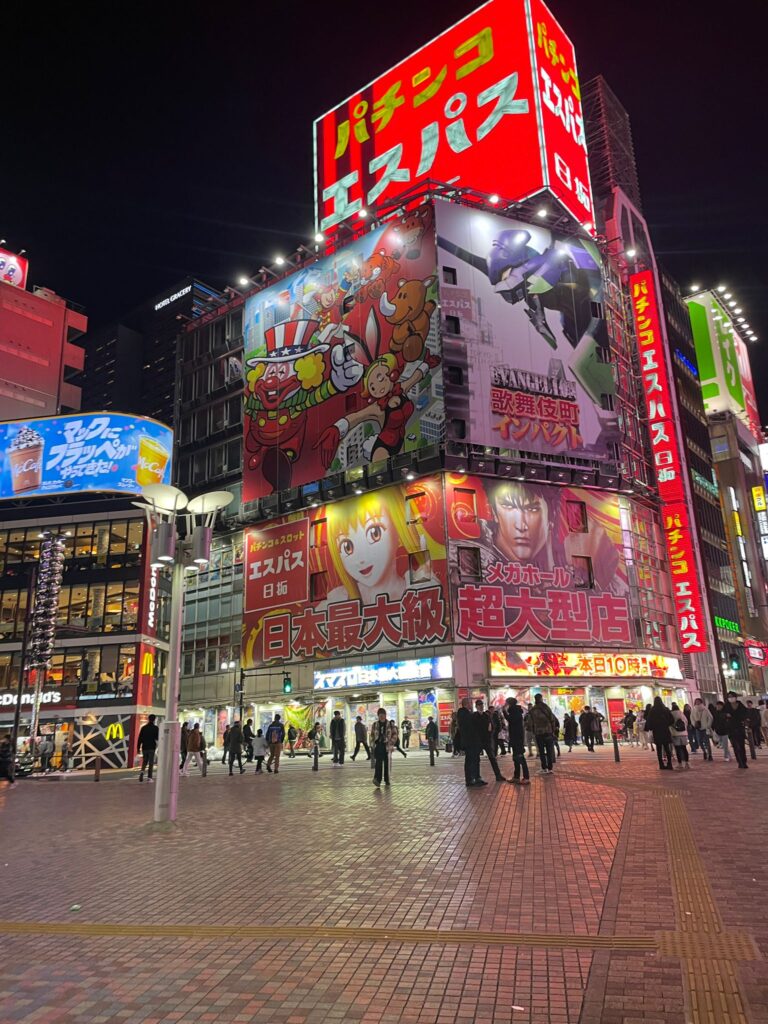
Background on Japan
Japan. A country known for living several years into the future with its technological innovations, yet also a country with a fascinating past. This country is known to have been inhabited for over 30,000 years. From sumo to samurai, anime to Shintoism, and ninjas to an obsessive gaming culture, Japan is one of the world’s most unique countries. Let’s dive into the history and find out why.
The Tokugawa Shogunate
The Shogunate Begins
Tokugawa Ieyasu became shogun (military dictator) of Japan in 1603 following victory in the Battle of Sekigahara. Whilst he only lived for another 13 years, the Tokugawa shogunate remained in place for 265 years, until 1868 when the Meiji Restoration saw imperial rule return to Japan, in place of the shogunate.
The Tokugawa shogunate was famous for shutting Japan off from the rest of the world. Borders were closed for well over two centuries, with only a series of Dutch traders allowed into the country, as Japan didn’t see them as a threat.
Even then, the Dutch were only allowed onto smaller islands, and not into mainland Japan. However the shogunate gave them this special access because they did not see the Dutch as having ambitions to spread Christianity or seize territory, only to trade.
Shutting the borders for such a long time allowed Japan to flourish. In a world long before radio broadcasts, television and the internet, Japan was completely cut off from outside influences.
The Growth of Japanese Culture
The culture of Japan was allowed to grow in a way that has had a major impact on the Japanese people, even today.
The samurais existed for around 700 years, but it was during the Tokugawa shogunate that they had the greatest impact on Japanese culture.
Samurai culture was based on respect and honour. By cutting themselves off from foreign influences, the Japanese found themselves surrounded by this culture in everyday life. Despite samurais never making up more than 10% of the population, their high status in Japanese society saw many look up to them and emulate samurai values.
The Meiji Restoration saw the end of not just the Tokugawa shogunate, but also the samurais. However, samurai values remain strong in Japanese society almost 200 years later.
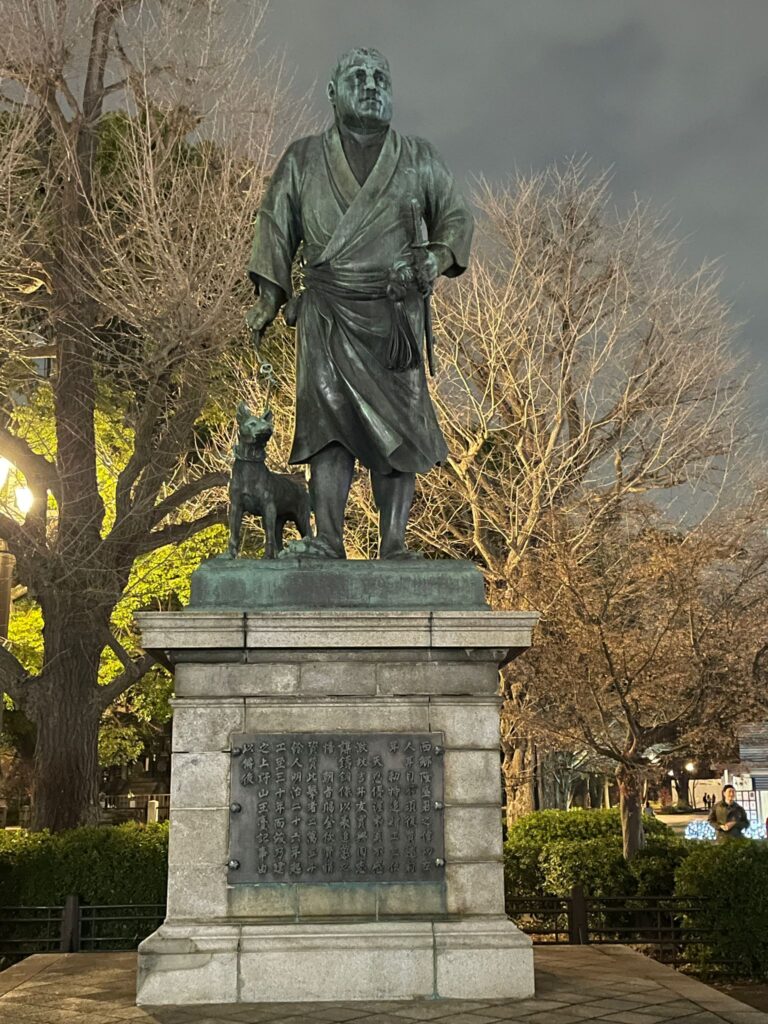
Japan in World War II
Japan was worried about the Soviet Union (USSR) and communism in the years leading up to World War II. As a result they signed the Anti-Comintern Pact in 1936 aligning themselves with Nazi Germany, as a show of strength against a common enemy.
Three years later and the Japanese were spooked by the Nazis aligning with the USSR, by agreeing to split Eastern European countries between the two nations with the Molotov-Ribbentrop Pact.
The Anti-Comintern Pact soon lost impact and the Tripartite Pact was signed in 1940. This was between Japan, Germany and fascist Italy, and was directed at defending the three nations primarily against the USA rather than the USSR.
It was a marriage of convenience more than anything else. Japan had little in common with the Nazis or Italy, other than identifying the same enemies. Japan also saw it as a way to support their imperialist tendencies in East Asia.
The Tripartite Pact marked the beginning of the Axis powers, who would go on to suffer a humiliating defeat in WWII.
The war in Europe had been won by the allies after Hitler’s death and Germany’s surrender in May 1945. This led to the focus falling on Japan who refused to give up.
The End of WWII
The Japanese defiance was short-lived. In August, the first ever nuclear bomb was used in war, with the USA destroying the Japanese city of Hiroshima, killing around 100,000 people in the process.
Three days later, and the USA did the same again in another Japanese city, Nagasaki.
Defeat was inevitable, and the Japanese surrendered. Emperor Hirohito allowed the allied forces to occupy Japan, with the goal of installing demilitarisation and democracy. Hirohito was left with no choice, knowing Japan would cease to exist should the war (and nuclear strikes) continue.
Hirohito was spared being treated as a war criminal, with allied forces believing his cooperation could help them achieve their post-war goals.
In 1952, the allies allowed Japan to become independent once again, under a series of conditions which including losing all territory gained through military aggression, and negotiating compensation with all countries it had attacked.
How Japan Transitioned to a Prosperous Country of Peace
The allied occupation had a lasting positive impact on Japan. The goals of installing democracy and nullifying the Japanese military threat were achieved. Although Japan has been allowed to grow an army. Yet this time around, they are only interested in defending Japan, rather than invading neighbours.
A 1951 security alliance with the USA enabled Japan to focus on economic growth rather than security. This strategy was incredibly successful, with Japan having the 4th-largest economy in the world in 2024.
Japan achieved such substantial growth by opening up to global trade, whilst simultaneously protecting its borders with very strict immigration laws. This has enabled Japan to maintain cultural harmony similar to that under the 265-year Tokugawa shogunate period of isolation.
Two key factors in the growth of Japan have been a focus on education, and on electronics.
Democratic thought processes and a commitment to peace have been taught in Japanese schools ever since the allied occupation ended.
Focusing on Technology and Gaming
Meanwhile, the country has embraced technological innovations. Japan loves to use modern technology. Major innovations tend to start in Japan and gradually spread across the world in the following years. For example, automated restaurants started to gather traction with the invention of sushi conveyor belts in Japan as early as 1958, just six years after independence. They’ve since become popularised across the west and the Middle East with the invention of YO! Sushi restaurants in the late 1990s.
Japan has also become the Mecca of gaming, with all big gaming brands either coming from Japan, or having major links to the country.
The dark days are well and truly over. This is a country known mostly for positive reasons in the 21st century.
Although, despite having such a large economy, it has struggled with the fallout from Covid and the postponed 2020 Olympics. In fact, I was in Tokyo for New Year’s Eve in 2023. There was no fireworks display in the city, many countdown events of the past were non-existent, and even locals had no idea about events going on in the evening. Rumours spread that festivities were cancelled due to the cost of hosting them. Although I was never able to verify these rumours.
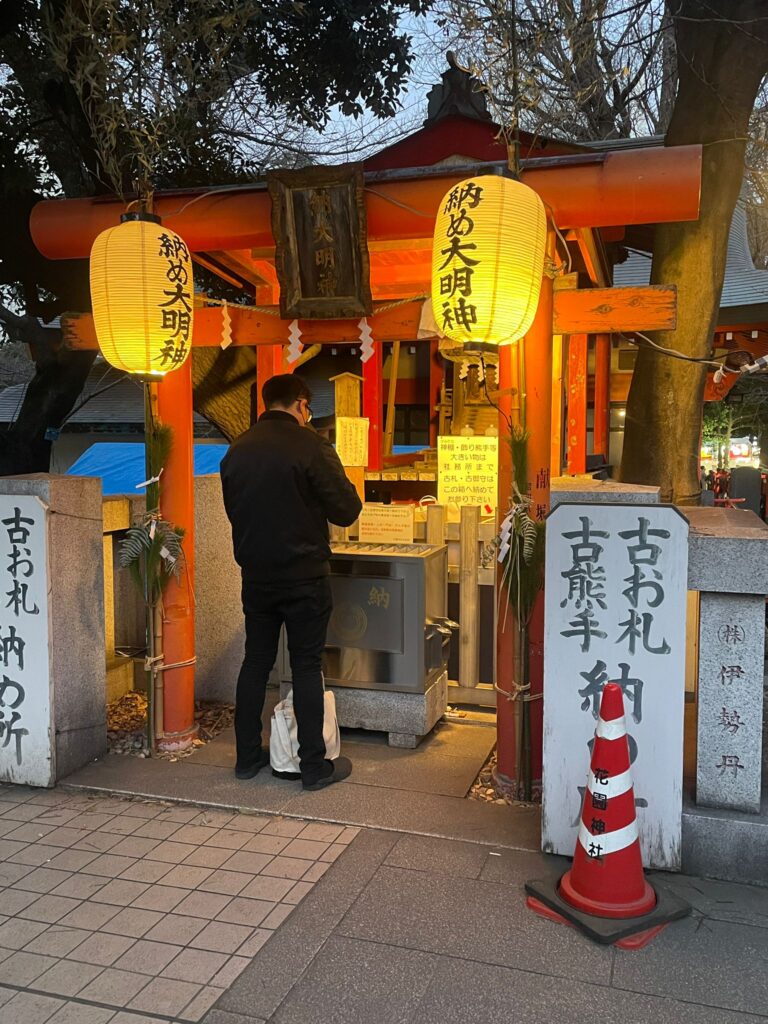
Is Japan Safe to Visit?
Japan is the second-safest country in the world according the Global Peace Index. For those wondering, Finland is first.
This is slightly misleading however.
Crime in Japan
If we talk solely about crime, then Japan is indeed one of the world’s safest countries. The culture of honour and respect has made Japanese people very pleasant and the idea of harming people is greeted with horror in Japanese society.
Unfortunately these “safest country” lists do often focus on crime, war and/or terrorism. These being areas where Japan has nothing to worry about.
Natural Disasters in Japan
There is one major safety issue within Japan however: natural disasters.
Japan is located in the Pacific Ring of Fire: a highly volatile zone full of tectonic activity. Earthquakes, volcanoes and tsunamis are common here.
In fact, a major earthquake struck Japan whilst I was there at the beginning of January 2024. We felt nothing in Tokyo, but a quake struck near the Noto Peninsula causing a tsunami which killed over 250 people.
This particular earthquake had a magnitude of 7.5. An earthquake with a magnitude of 7 or above is considered to be a major one which can cause serious damage. Only 10-15 take place each year globally, however Japan averages one of these every couple of years.
Odds are you won’t be in Japan when a major earthquake strikes. And even then, you will probably be far from the impact zone. But this is a danger that Japan does face.
In 2011, the Tohoku earthquake killed around 20,000 people. Worst of all, it damaged the Fukushima nuclear plant which led to severe radiation leaks. This is an extreme example, with only three earthquakes since then producing over 10 fatalities. Just remember this is not Western Europe where these threats don’t exist.
Volcanic eruptions are another issue Japan faces, albeit to a much lesser extent. Only three have occurred since the turn of the millennium with a combined 56 deaths so don’t fear Japan for these reasons.
To conclude, Japan is a very safe country. But the threat of earthquakes and tsunamis does still exist, despite the chances of you being caught up in one being very low.
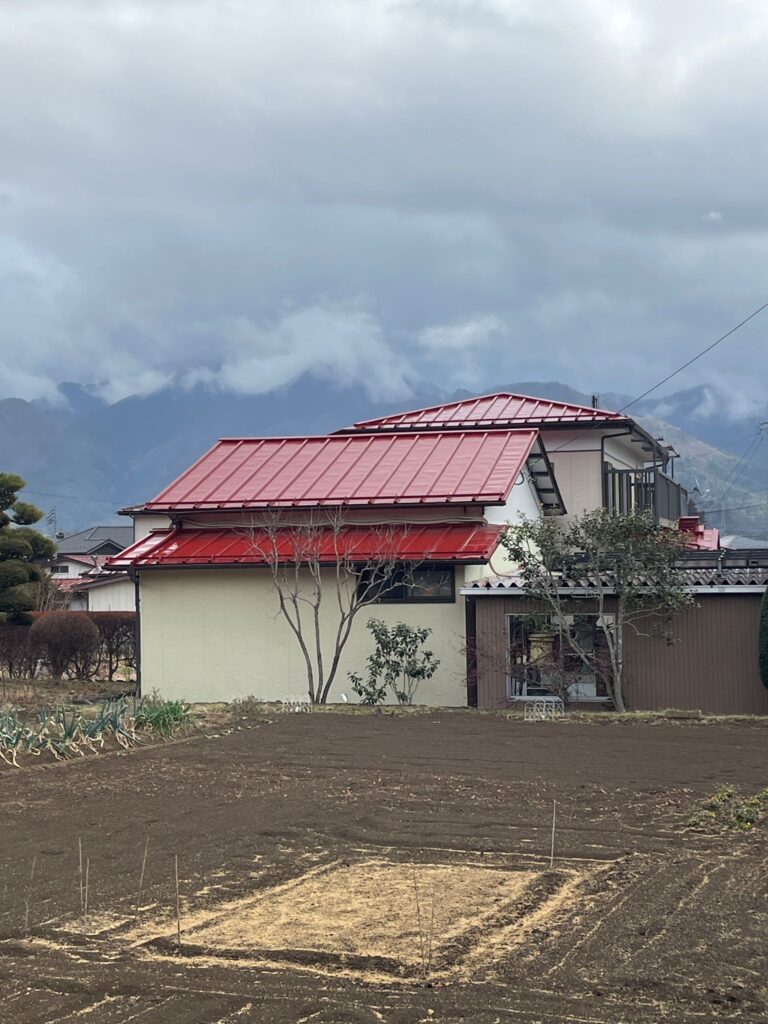
When is the Best Time to Visit Japan?
If you wish to see sakura (cherry blossom) season, the best time to visit Japan in 2024 is from late March to early May.
For the best warm weather, Japan is worth visiting from June to September during the summer months. These are certainly the best times to be in Japan if you’re into hiking. These are also the four months where average temperatures are above 20 degrees Celcius, reaching highs of around 28 degrees in August.
If you’re a fan of skiing however, then the best months to visit Japan are from December to April. These are the months the snow comes to the mountains, with January and February being the peak months.
It is worth noting that the rainy season in Japan runs from May until early July.
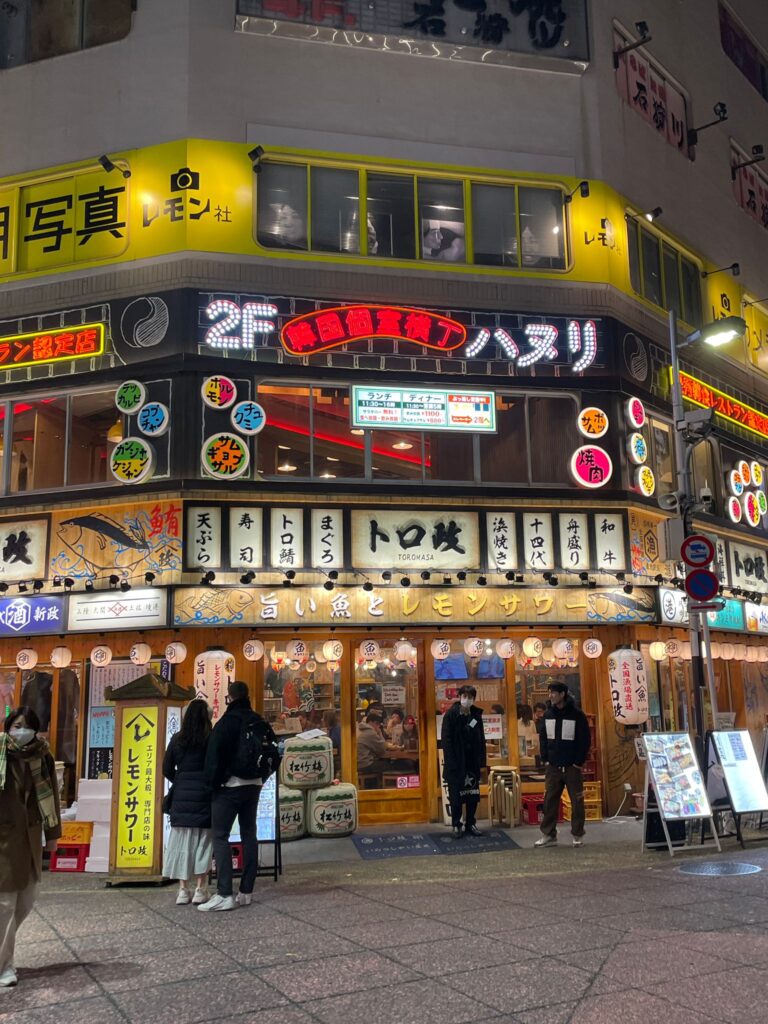
How to Visit Japan
You do not need a visa to visit Japan if you come from most major westernised countries. In Europe, citizens of most countries are able to get visa-free access to Japan, with the following exceptions: Vatican City, Bosnia Herzegovina, Montenegro, Kosovo, Albania, Moldova, Ukraine, Belarus and Russia.
Large chunks of the mainland Americas (including the USA, Canada and Mexico), Southeast Asia and some Middle Eastern countries also have visa-free access to Japan. Taiwan, South Korea, Australia and New Zealand are the main countries elsewhere in the world where citizens have this privilege.
On the flipside, you will need a visa if you come from almost any African country. There are exceptions for holders of Mauritius, Tunisia, Lesotho or South Africa passports. Citizens of pretty much any Asian country outside of those previously mentioned will also require visas. Likewise, for anyone from Oceania (outside of Australia and New Zealand).
How to get to Japan
As an island country, you will almost certainly need to fly to get into Japan. You can’t take a bus or train to enter the land of the rising sun.
Tokyo has two airports, with Narita (NRT) covering most major regions of the world. Africa and South America are the exceptions with Egypt being the only country in either continent with flights to and from Narita.
Tokyo Haneda (HND) covers similar regions, albeit to a much lesser extent. Whilst other international airports in Japan mostly connect with nearby Asian countries.
The one way into the country without flying is to take a ferry from South Korea to Japan. At an average of over $200 however, this certainly isn’t a cheap option.
How to get Around Japan
Japan is very well connected and easy to get around. The Shinkansen (bullet train) system offers speeds of over 300mph and connects pretty much all key areas on the Japanese mainland.
Buses, flights and boats are also very common around the country. The latter two being viable options for visiting Japan’s many smaller island spots.
Is Tokyo Cheap to Visit?
We found Tokyo to be a lot cheaper than expected. Yes, it is still slightly on the expensive side. But it’s not exactly New York prices.
Food is surprisingly affordable in the Japanese capital. Of course, if you wish to splash out for luxury, you can easily do that. However, an average meal at a Japanese restaurant will most likely set you back less than £10 ($12). Street food is often even cheaper.
A ticket on the metro will cost around £1 ($1.25) per journey. This is by far the cheapest way to travel in Tokyo.
Accommodation is an area that could cause a dent in your budget. You can find hostels starting from around £16 ($20). Although you will want to pay a little more than that to find somewhere where the quality is above average.
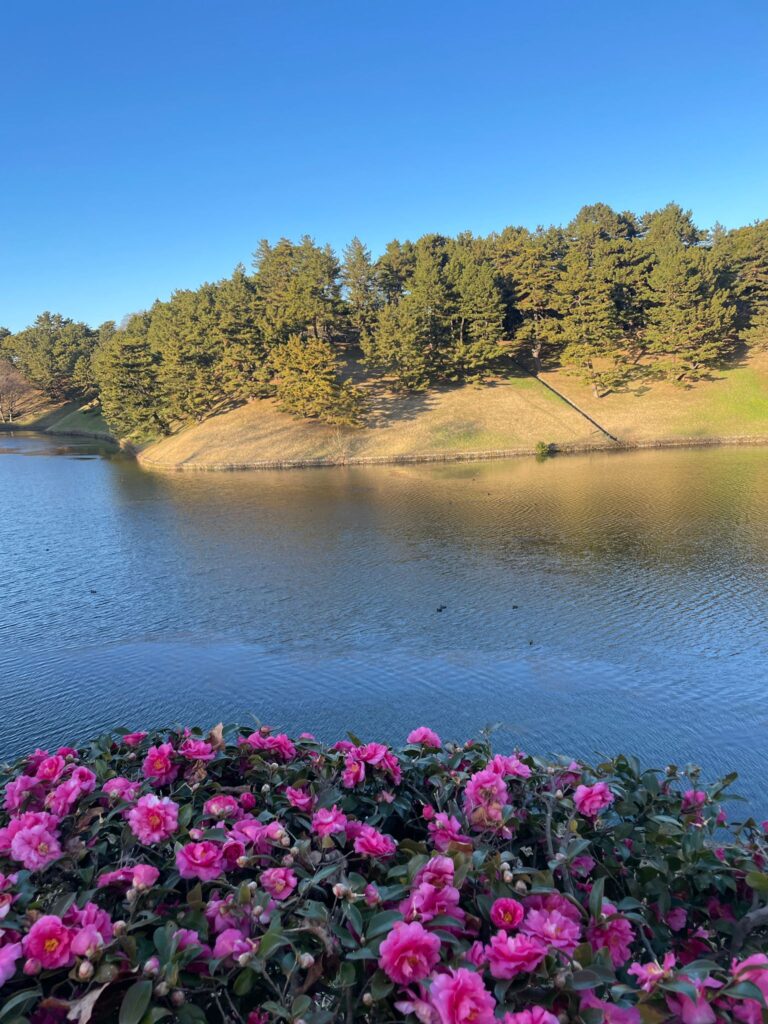
Where is Worth Visiting in Tokyo?
Is there anywhere NOT worth visiting in Tokyo? I highly doubt it. But let’s assume you only have a few days in this wonderful city. Here are some of the top places to see in Tokyo.
Shibuya
Shibuya Crossing
Tokyo’s Shibuya Crossing is the world’s busiest pedestrian crossing with an estimated 2 million people crossing each day. That’s 730 million people a year, or 9% of the world’s entire population! Okay, it doesn’t quite work like that. Many people crossing will be repeat crossers. Some locals and commuters will do the journey hundreds, if not thousands of times in a year. It’s impossible to calculate how many unique individuals cross at this famous spot, but it sure is a lot of people.
Viewing Shibuya Crossing from the Sky Tower
Go to the nearby Sky Tower and you can get a spectacular aerial view of Shibuya Crossing. Tickets cost 2,200 yen (£12/$15) for adults, and range from 600-1,700 yen (£3/$4-£9/$12) for children. Prices accurate as of January 2024.
Please note these are the prices for booking online, it will cost an additional 300 yen (£1.50/$2) per ticket if you book on the gate. Also tickets often sell out in advance, therefore you are much better off booking with the link above. This is not an affiliate link, I’m far too small a blogger to be paid for promoting these sorts of things!
How to Check Out Shibuya Crossing from Above for Free
If you want to check out Shibuya Crossing from above for free however, that is also possible within the Shibuya Scramble Square building, in which the Sky Tower is based. You need to purchase tickets to reach the Sky Tower on the 45th-47th floor, however you can take the lift up to the 12th floor and there is an atrium space where you can see the crossing through the window. In some ways, this is better than going up to the Sky Tower, as you still get a clear view of the crossing from above. Yet at a third of the height of the tower, you will be able to take better photos and see what is going on more clearly.
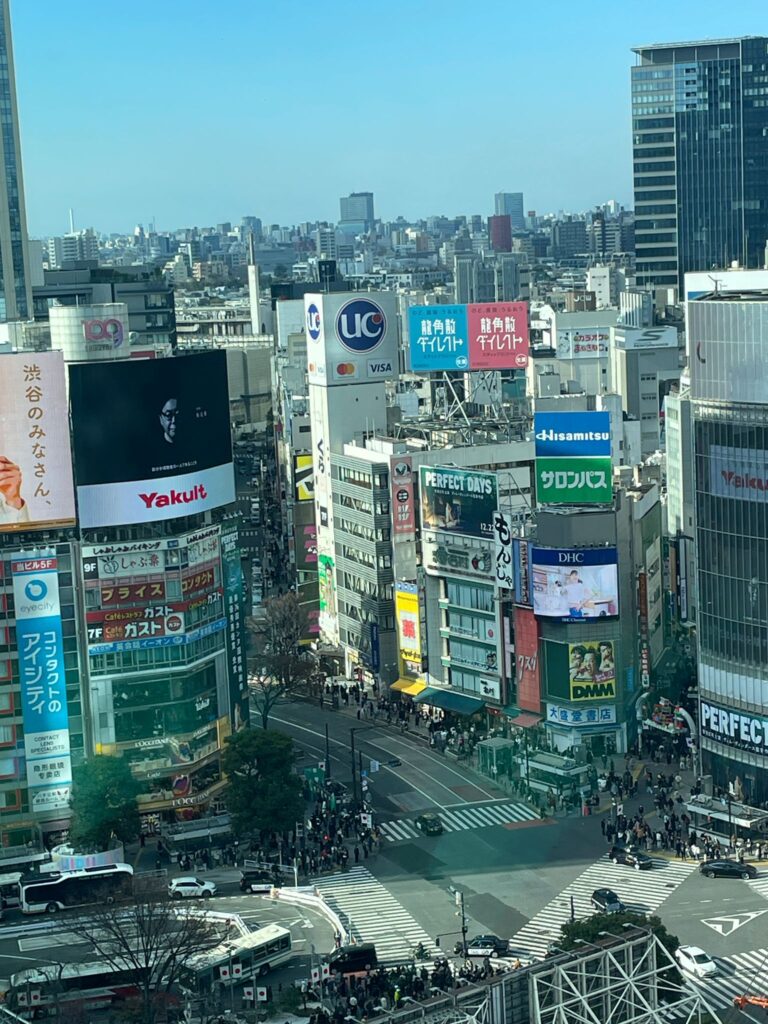
Hachiko Memorial Statue
Just minutes before leaving to check out Shibuya, I received a message from my girlfriend. “Make sure you take a picture with the Hachiko dog statue”. Hachiko dog statue??? What’s that?? Well let me tell you.
In the 1920s, a professor at a local university called Eizaburo Ueno would walk to Shibuya station every day with his akita inu dog Hachiko. The dog would return to the station every day at 3pm without fail to greet his owner.
However, in 1925 the professor died at work. Hachiko would return to the station every single day at 3pm waiting for Ueno to return. This happened daily until Hachiko himself died a decade later and was buried alongside his owner.
The story of Hachiko was one of remarkable loyalty. To commemorate the devoted dog, a statue of Hachiko was built right outside Shibuya Station.
Today, you can take pictures alongside the Hachiko statue. However, you may have to queue for around ten minutes to get a photo alongside this popular dog.
Some tourists received a scolding from locals for attempting to jump the queue. Patience and respect are important values in Japanese culture. So if you want to see Hachiko, be sure to wait your turn.

Nintendo Store and Pokemon Center
Japan is the home of video gaming. Not just that, but it is the epicentre of major gaming brands, with Nintendo and Pokemon being two of the biggest.
Head to Shibuya Parco shopping centre, and take a lift up to the Cyberspace floor. You will see many gaming stores here, but none more prominent than the Nintendo Store.
It’s the first official Nintendo store, and paradise for fans of Japan’s otaku (geek) culture. Unfortunately, demand outweighs supply by some distance when it comes to visiting this relatively small store. This means you will often have to pick up a ticket with a timeslot. The time on the ticket lets you know when you can enter the store. This is to prevent overcrowding.
Unfortunately, we were on limited time and had to leave before my ticket was valid for entry. Therefore we did not get to see all the Nintendo merchandise inside.
Instead I checked out the neighbouring Pokemon Center. Tokyo has several Pokemon Centers dotted around the city. The largest is in Ikebukuro. But the Shibuya one is the most convenient to double up with a Nintendo Store trip.
I loved Pokemon whilst growing up, and had a keen interest in checking this place out (somehow, despite this, I do have a girlfriend). Unfortunately, it was absolutely rammed full of tourists and shoppers alike. There was little room to move around, and aside from the cool Mewtwo statue at the entrance, there was little to see here that you wouldn’t be able to find online.
Be sure to double check the Pokemon Center opening hours before you head here.
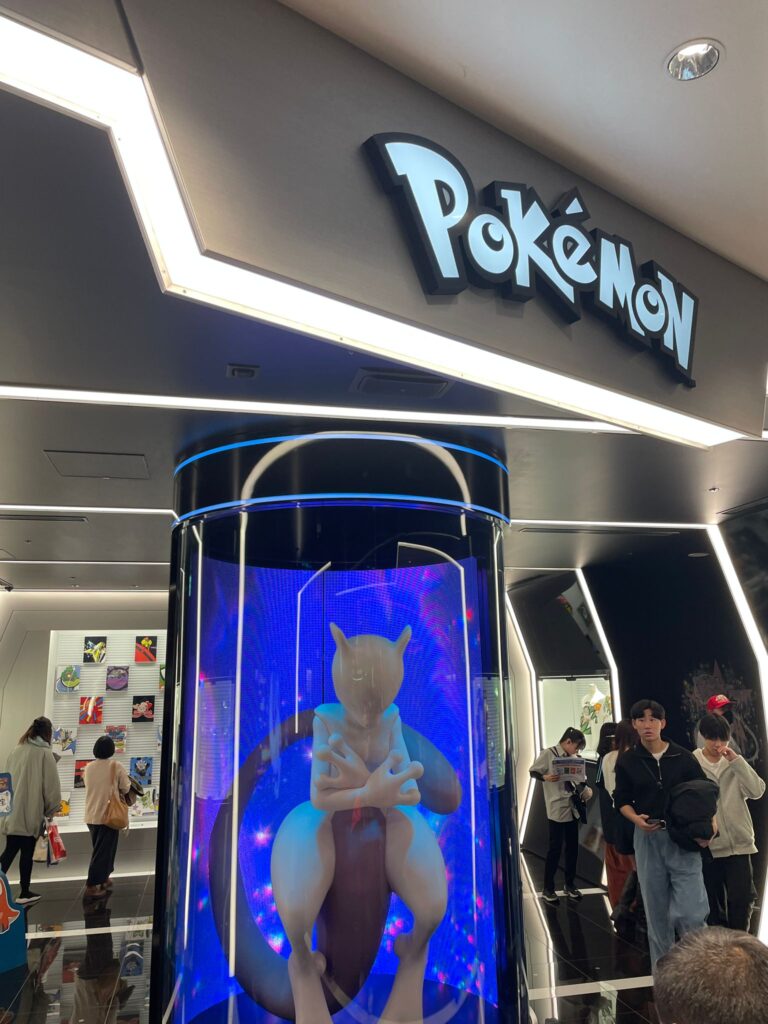
Yoyogi Park
In 1964, Tokyo hosted the Olympics. The Olympic village was hosted within Yoyogi Park. Some remnants from 1964 still exist today, including some (now-decaying) buildings which once hosted athletes, and the Yoyogi National Gymnasium. The gymnasium was used during the 2020 Olympics (held in 2021 due to Covid) as the handball stadium.

Aside from the Olympics, the park is a cool place in its own right with many things to do. You can walk, run, cycle, participate in various sports, or even catch a festival if you’re there at the right time.
The park is free to enter, but some sports venues cost money to hire. The basketball court is free. However the football field costs from 7,200 yen (£40/$50) for two hours of use.
Another notable sight within Yoyogi Park is the Meiji Jingu Shrine – a Shinto shrine open from sunrise until sunset which is free to enter. Unfortunately we arrived just in time for sunset, at the very moment they were closing the gates. Therefore we couldn’t see any more than the arch at the entrance.
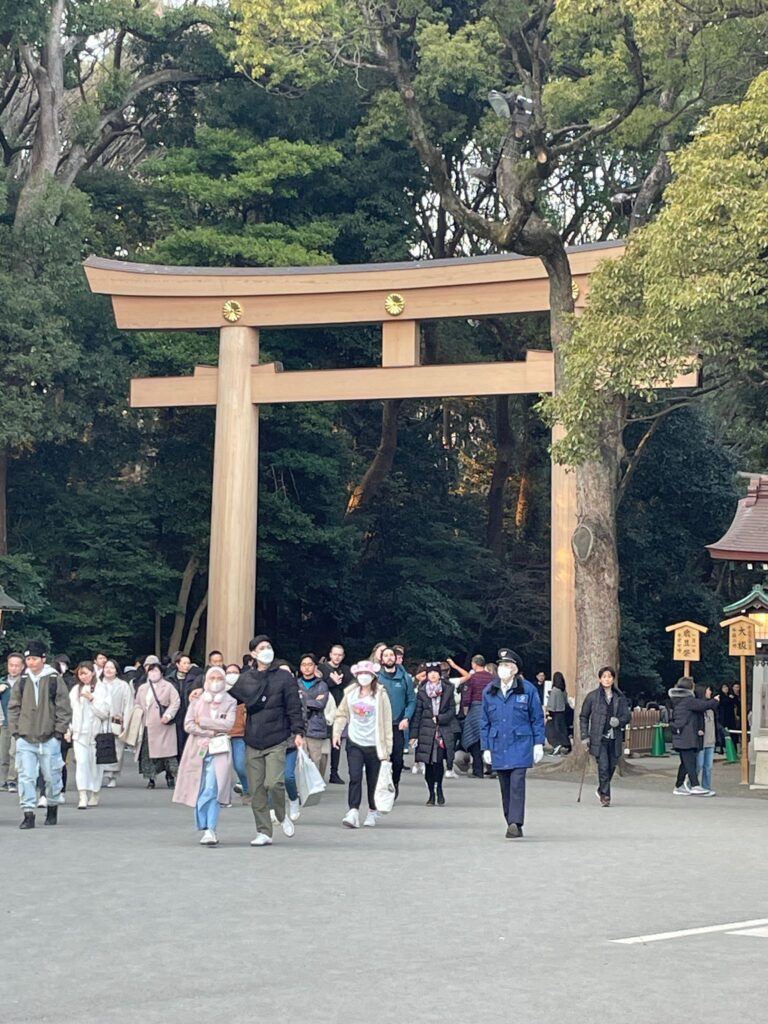
Shinjuku
The Golden Gai
An hour’s walk from Shibuya (or 7-minute metro ride) is Shinjuku. This part of Tokyo has a lot of flashy large buildings, but tucked away in a corner behind them is the Golden Gai.
The Golden Gai is a gentrified part of Tokyo which was once the city’s red light district way back in the 1950s. However, since the sorts of activities red light districts attract were banned soon afterwards, the Golden Gai transformed into a popular hipster spot with around 200 tiny bars.
What are the best bars to visit in the Golden Gai? For that, and more details I have written a full article on the best 5 bars and everything you need to know about the Golden Gai.
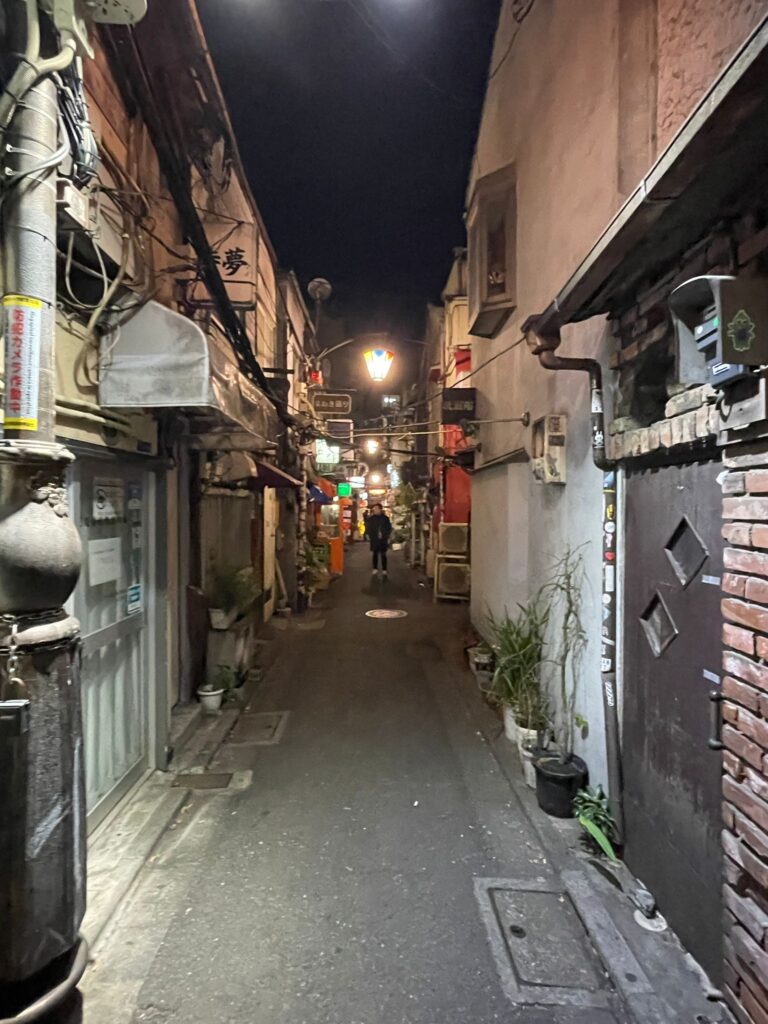
Akihabara
An Introduction to Akihabara
Japan is the gaming capital of the world. Tokyo is the gaming capital of Japan. And Akihabara is the gaming capital of Tokyo.
Muslims have Mecca, Jews have Jerusalem, and nerds have Akihabara.
If you want to go shopping, this is the place to go for electronic goods, retro video games and anything related to otaku (geek) culture. Trading cards, merchandise, and more.
If you missed out on any gaming memorabilia from over the years, then perhaps the best place to get it (other than the internet) is Akihabara. This sprawling neon district has everything ranging from shiny new consoles and games, to worthless electronic junk from a bygone era that may not even function these days. One man’s trash is another man’s treasure though, so I’m sure there are buyers for these things. They wouldn’t be offered for sale if they never had any interest, right?
Akihabara’s Arcades
Aside from the gaming shops, Akihabara is absolutely rammed full of multi-story arcades. Just like in Taiwan, claw machine arcades are all over Akihabara. These pesky machines notorious for being rigged in the arcade’s favour come with a twist here however.
If you attempt several times to pick up a prize, and continue to fail, the staff may unlock the machine and move things around to make it easier to bag a prize.
Away from the claw machines, there are numerous pay-to-play gaming machines covering just about any interest you may have. Shoot the monsters, collect the cards, or dance on one of those Dance Dance Revolution machines popularised in the 1990s, Akihabara has it all.

I had a go at Arkanoid, a block-breaking retro classic which I was pretty good at in the 1990s and early 2000s. Unfortunately the years have not been kind to me, and in two attempts (with three lives on each) I never made it past the second level.
Many games allow multiple players to compete. But be wary of challenging a local. The Japanese are masters of their craft and will almost certainly wipe the floor with you.
One type of game I witnessed involved locals bringing their own deck of cards, with games having slots to utilise the cards players have collected. Japan never fails to make gaming experiences even more interactive than before.
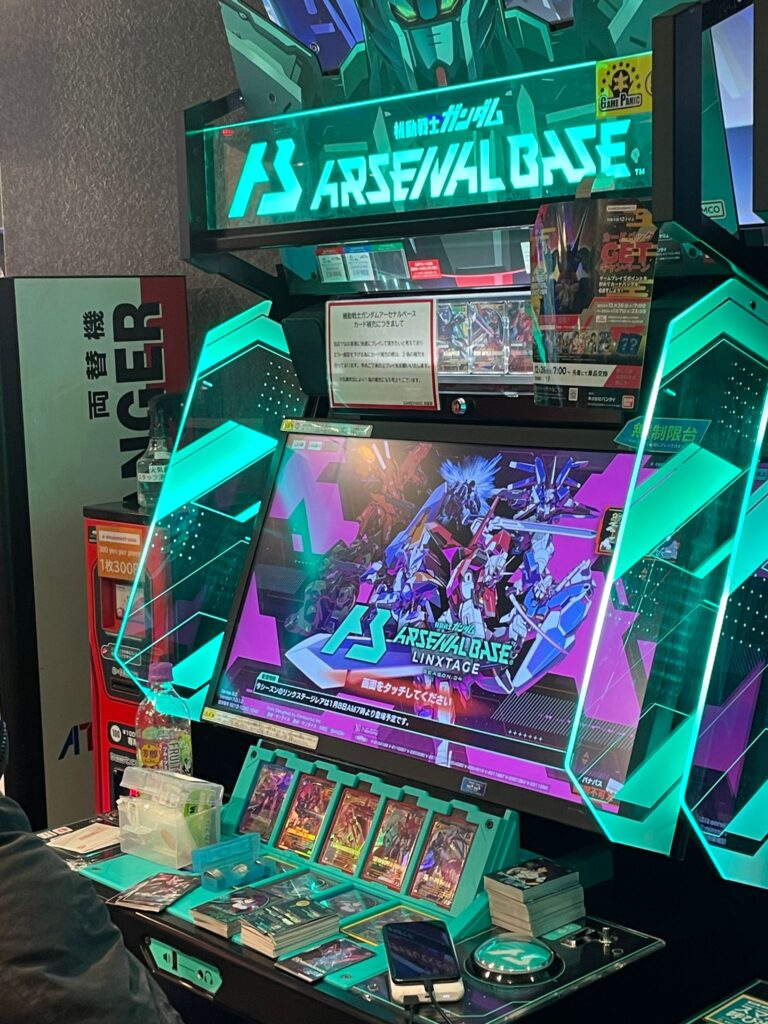
Trading Cards in Akihabara
Speaking of cards, trading cards could be found across the city. In fact, the apparent “world’s biggest Pokemon card store” Hareruya 2 can be found here. The lower stores sell Pokemon cards. Nothing unusual about that…right?
That is, until you see the prices. This is the go-to place for Pokemon cards and we were astonished to see three cards listed for a combined total of almost £160,000 ($204,000).
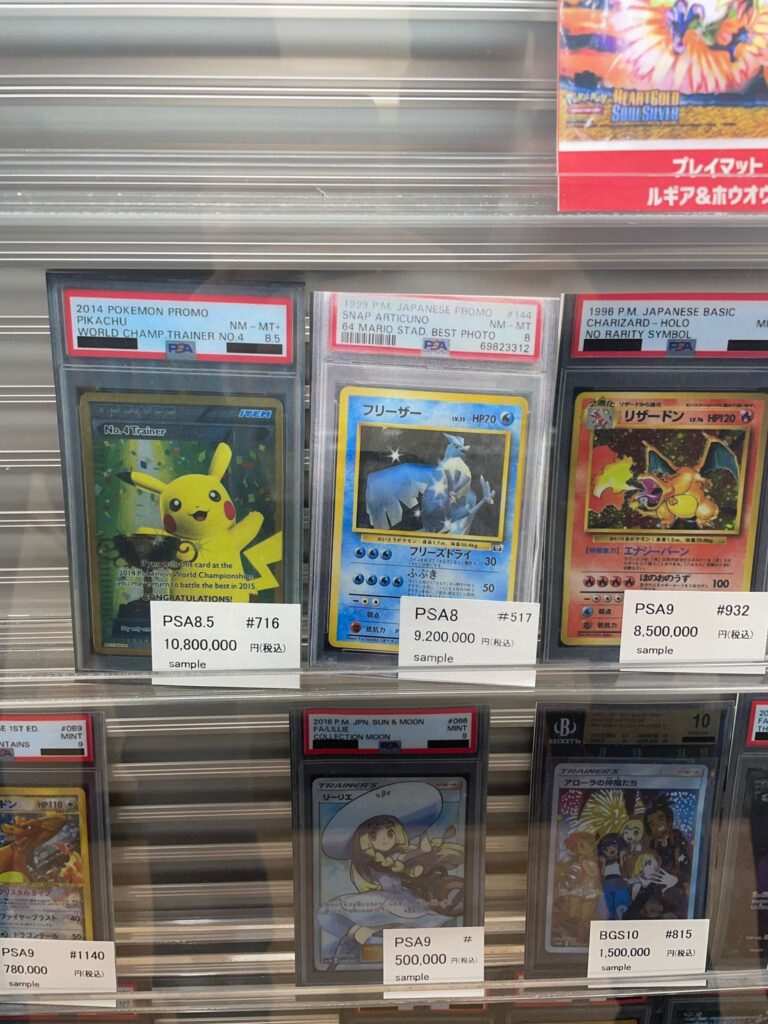
Having since done a bit of digging, it turns out this store also recently had the world’s rarest Pokemon card, Pikachu Illustrator, on sale for a cool 200,000,000 yen (£1,083,000 or $1,380,000). Supposedly only 39 copies of this card were ever created. Since this came out in 1997, was created for a game aimed at children, and no one knew how much value it would one day hold, you’d imagine many copies have since been badly damaged or destroyed. The 1990s equivalent of losing your Bitcoin drive in 2010.
The good news for bargain hunters? It didn’t sell, and you could later buy Pikachu Illustrator for half price!
Head to the higher floors of Hareruya 2 and you can find two whole floors dedicated to playing the Pokemon Trading Card Game. Must admit, I thought this game died in the 1990s. But in Japan at least, it is still going strong today.
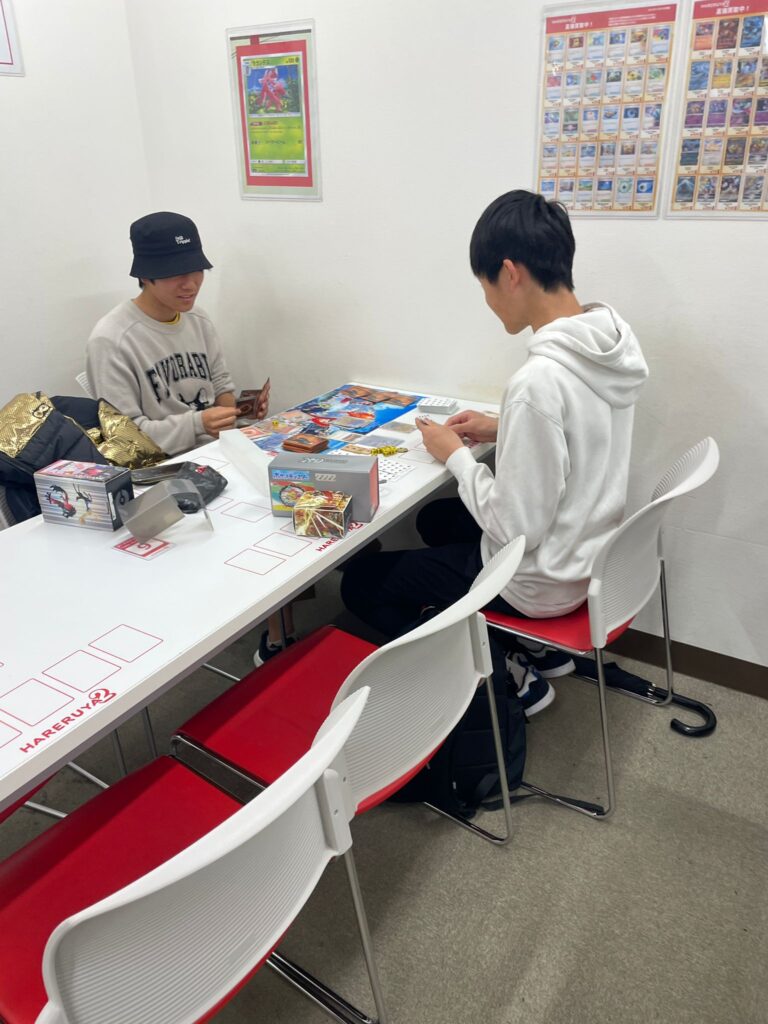
Akihabara is absolutely worth visiting in Tokyo. One of the most fun and fascinating places for sure.
Free Walking Tour
Our main reason for visiting Akihabara was not the gaming district, as interesting as that was. It was to do a free walking tour which started there. The tour with Tokyo Localized went from Akihabara to Ueno, taking in the likes of Kanda Myojin (a shinto shrine) and Ameyoko Shopping Arcade, a packed local market, along the way. During the 3-hour tour, our guide Hiroshi deep-dived into the history of Japan and the local culture of the places we visited.
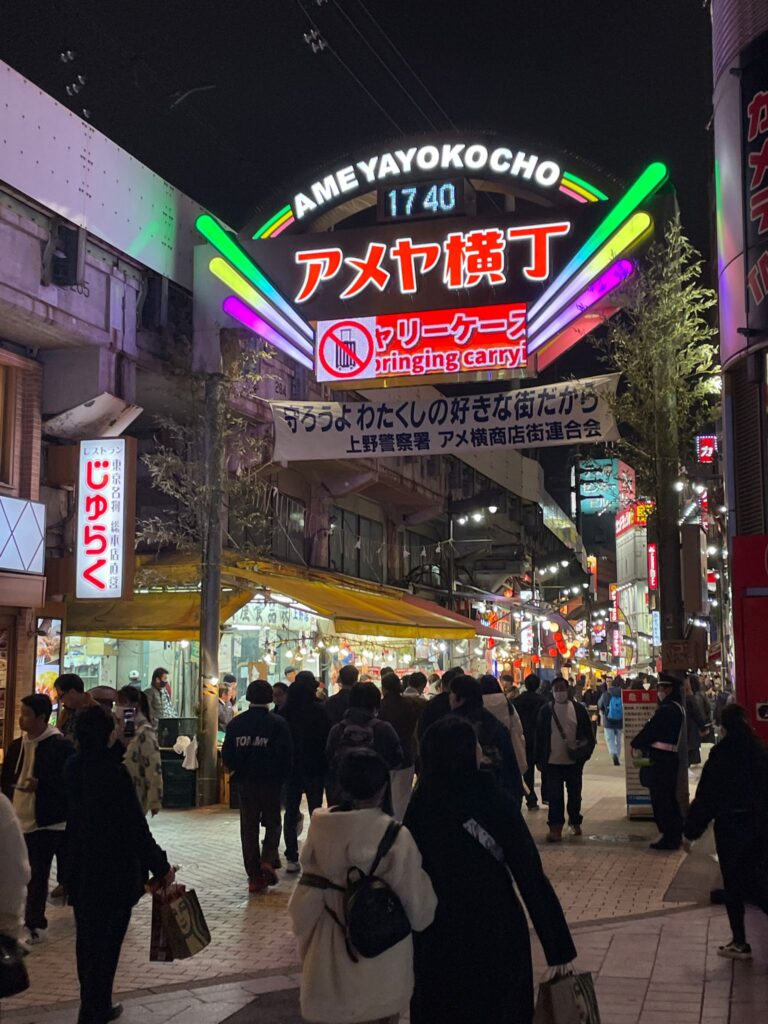
We learnt a lot about the otaku culture in Akihabara, the samurai era in Japan, and how over 250 years with closed borders allowed the culture to flourish.
Highlights of the Walking Tour
One of the highlights was Kanda Myojin where Hiroshi showed us how followers of Shintoism bow, clap and make wishes which they hope will come true. He also explained to us how omikuji work. These are small fortunes written on a piece of paper. Believers will generally take good fortunes home with them, and tie bad fortunes to a wall in order to leave the bad fortunes behind.

The tour finished by taking a trip through the crowded Ameyoko market, and ending in Ueno Park next to a statue of Saigo Takamori. Takamori was the last samurai in Japan. He is said to have commited seppuku following the fall of samurais after the Meiji Restoration.
Hiroshi was a great guide who was very informative and this fantastic tour is absolutely worth doing whilst visiting Tokyo. My only criticism would be that Hiroshi didn’t have a microphone. With a large group of around 30 people, and several stops in noisy areas, this would’ve been a useful addition as it wasn’t always possible to hear what he said.
The tour overall however, was a massive success.
Chiyoda
The Imperial Palace
Right in the heart of Tokyo is the Imperial Palace, home to Japan’s royal family. Unfortunately, access to the palace is very limited. You can see a few buildings from a distance on the outside, but no more than that.
For more access, there are guided tours of the palace. They only go through a section of the grounds, without entering any buildings. Entrance through the gates is free, and tours generally run through the East Gardens and around a couple of minor buildings near the entrance. You won’t be able to get too close to the palace itself.
We were the victims of terrible planning. We went to visit the palace on January 1st, but arrived at 3pm just as they were kicking everyone out. Then we went to Mt. Fuji on the 2nd, before trying the palace again on the 3rd.
Only, it turns out the annual New Year’s greeting is on the second. And this is a big event with the public being able to access more of the palace grounds, and see the royal family themselves come out to celebrate on the balcony.
This is one of two annual events with this level of access to the Imperial Palace. The other is February 23rd for the emporer’s birthday.
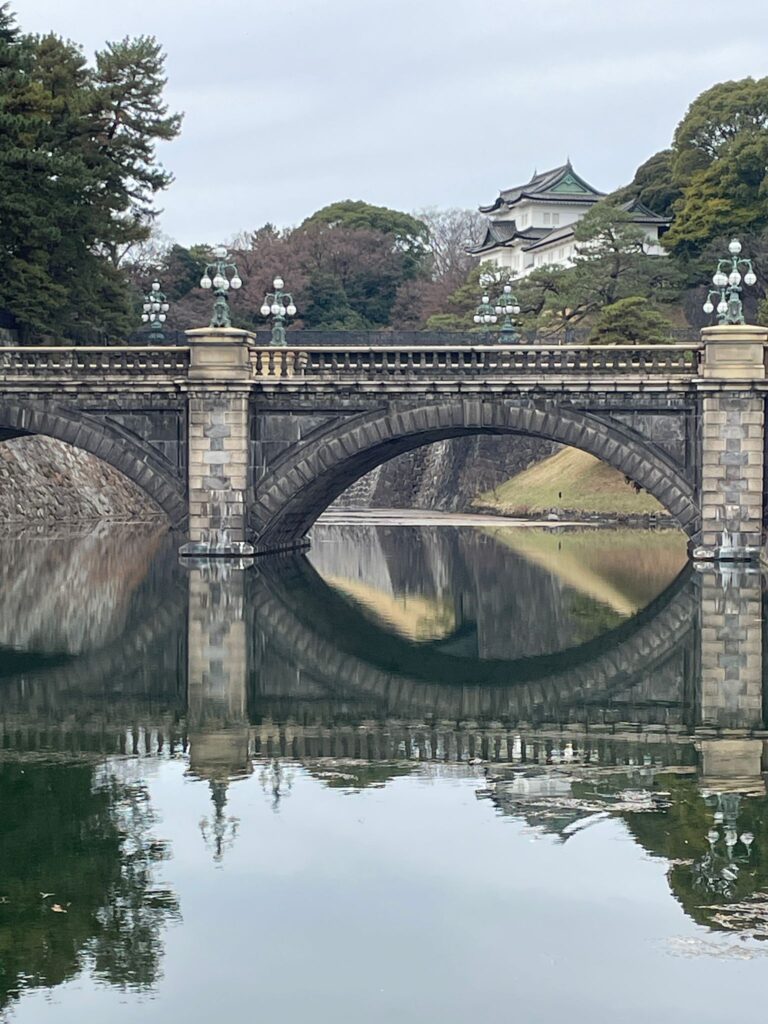
Doing a Mount Fuji Day Trip from Tokyo
Tokyo is incredible, however it is also worth visiting one of Japan’s most impressive sights which is located just a couple of hours from the capital. Mount Fuji.
We opted for a guided tour on the Mount Fuji website. This was the “From Tokyo: Mt. Fuji, Lake Kawaguchi & Lake Yamanaka Guided Tour”. The tour cost just 7,800 yen (£42/$54) although this was discounted from the usual price of 10,000 yen (£54/$69). However, the discounted price is still valid as of January 2024. Therefore it’s best to book quick!
Stop 1: Chureito Pagoda
The tour started with a visit of Chureito Pagoda. This spot is famous for incredible pictures of Mount Fuji with the cherry blossoms and pagoda in the foreground. However, this was a real “Instagram vs reality” moment for us. There were no cherry blossoms (wrong season) and there was a lot of gloomy fog which meant Fuji wasn’t visible during our trip.
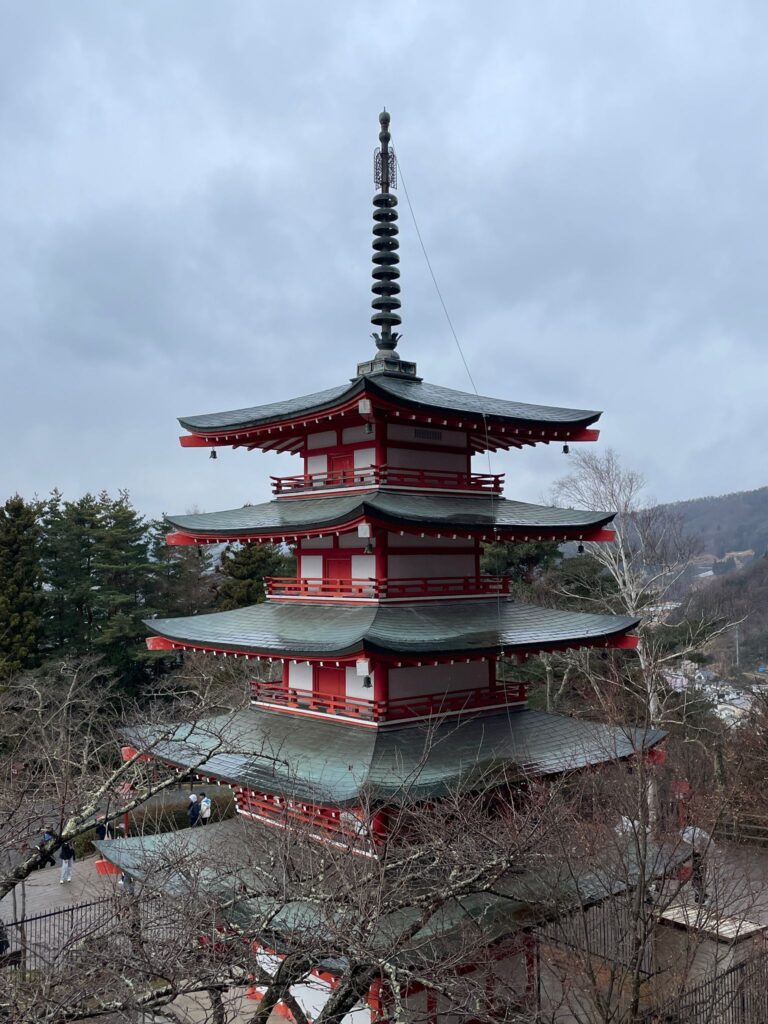
Stop 2: Lake Kawaguchi
Next up was Lake Kawaguchi, another place with supposedly stunning views of Fuji. Again, the weather was not our friend and we retreated for cheesecake and a coffee before moving onto the third stop.

Stop 3: Lake Yamanaka
At this point the group split into two. Some stopped at an onsen (hot spring) to enjoy for the next couple of hours. The rest of us opted for a cruise around Lake Yamanaka in the hope that our final stop would be successful for seeing what we all came for.
And sure enough, the fog slowly began to lift during our cruise on a swan-shaped boat. We were able to at least see an outline of Mount Fuji. Something is better than nothing, right?
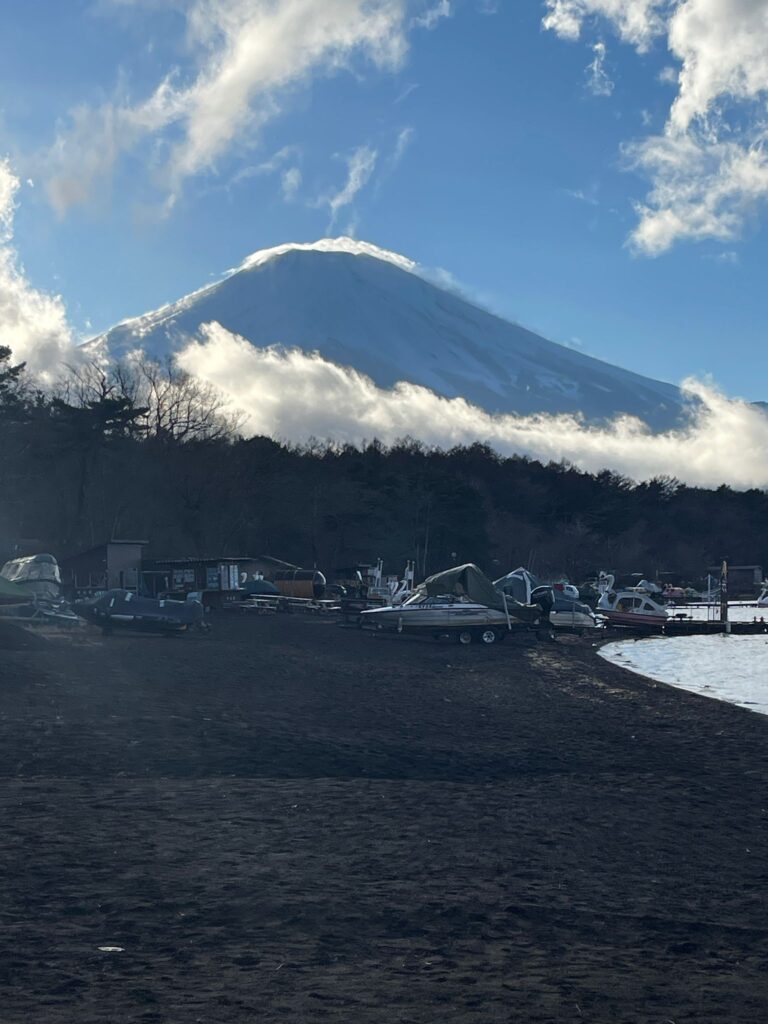
And this was it. It was time to go back to Tokyo, having at least seen a little of the mountain. Off we went back on the tour bus, thinking our next stop would be Shinjuku Station.
Stop 4: A Return to Lake Kawaguchi
However, the fog cleared up a little more. And our tour guide decided to give us a pleasant surprise. We would head back to Lake Kawaguchi to see Mount Fuji without the fog.
And finally… the tour had become worth the money we paid for it, and so much more. Mount Fuji. There it was in all its glory. And wow, it really was spectacular.
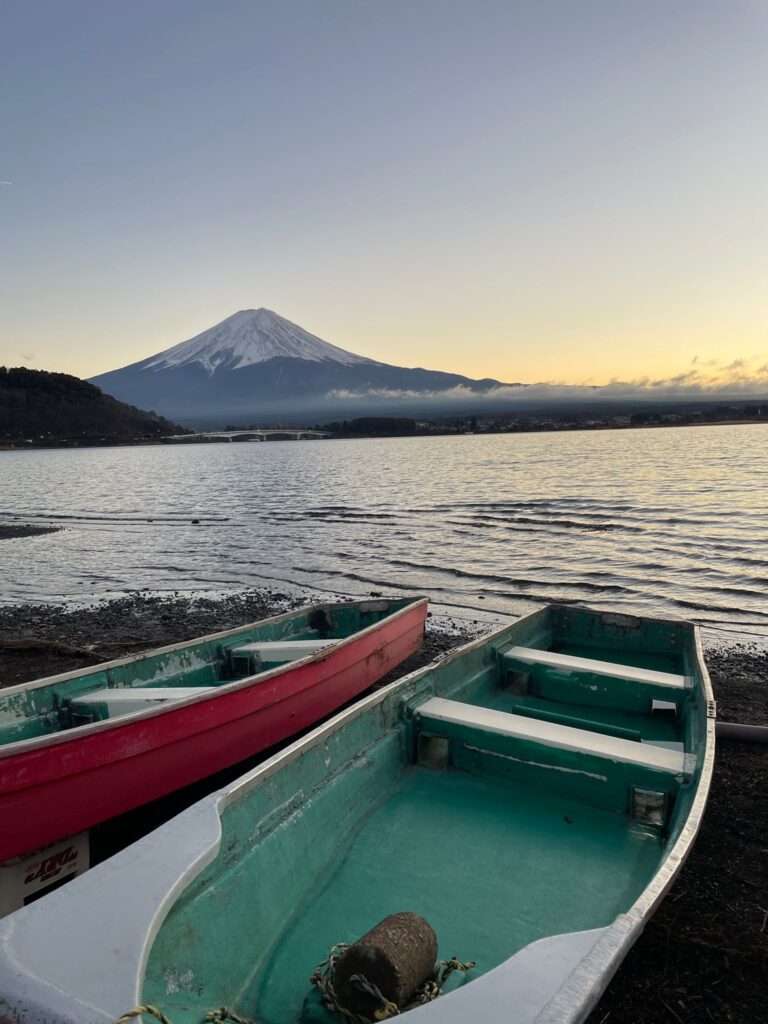
Ultimately, the tour was a roaring success. I would highly recommend the same tour to anyone who wishes to see Mount Fuji in a day trip from Tokyo. The best time to do this would be during the cherry blossom season of March-May. If it happens to be a clear day, then I cannot imagine a better experience.
Where to Stay in Tokyo
Normally I travel as a budget backpacker. However this was not the case in Tokyo. I went with my father and we stayed in the luxury Shinagawa Prince Hotel in a part of Tokyo called, um, Shinagawa.
Here I will sum up the positives and negatives before offering views on whether or not it is worth visiting.
Shinagawa Prince Hotel (£164/$209 Per Night)
Pros
The rooms were large and comfortable. They were very warm, providing a much needed respite from the winter chills outside. The beds were incredibly comfortable. And the bathrooms were great with a nice warm bath and shower.
Not unique to this hotel in Japan, but one major quirk was a control panel by the toilet with a series of buttons. They triggered a number of features including warming up the toilet seat, and letting off various jet sprays which in all honesty was a lot of fun.
The wifi always worked well here and the breakfast selection was decent. Perhaps best of all, were good views of Mount Fuji on a clear day.
Cons
It was horribly overpriced. Yes the rooms were nice. But everything else came with extra charges. The swimming pool for example would cost an extortionate 5,000 yen (£27/$35) or above for a single person (adult) for just one day. Oh, and the pool is only open from July to early September.
Then there was the breakfast. Again, it was not included in the already-high room price. It cost £20/$26 per day meaning we only had it once as a treat. Whilst the buffet selection was good, I’ve had much better from other four-star hotels that cost up to 6x less than this place. The drink selection was poor. They had a load of different-coloured drinks with quirky names to make them sound luxurious. Every single one of them was overloaded with ice and tasted just like tap water. They also had a drinks machine with orange juice and a few soda options hidden far in the corner, which we only discovered towards the end of our time here. It could do with more juice options.
Overall
In all honesty, this is a good hotel with a lot going for it, but it falls horribly short on price. Hotels of this quality usually include breakfast and swimming pool access for guests. The price for the room alone is extortionate, but the additional costs for breakfast and (when open) the swimming pool are ludicrous.
You can easily find a hotel in Tokyo of a similar quality for half the price. For that reason, I would rate this place a 6.5/10. If they halved the price and included both breakfast plus year-round swimming pool access, it would be a 9.5/10.
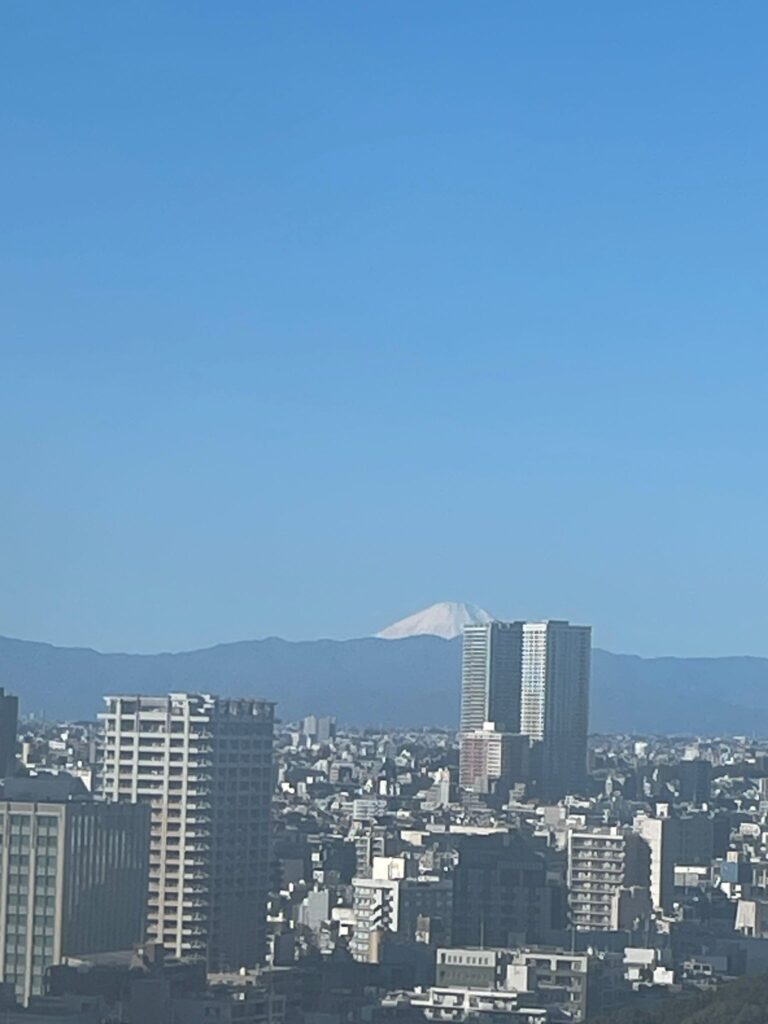
Final Thoughts: Is Tokyo Worth Visiting?
Tokyo is without a doubt worth visiting. This magnificent city is one of the best in the world. It has so many quirks and surprises, as well as some of the planet’s kindest people.
Tokyo is a city of convenience. You will never have to wait more than 5 minutes for the metro. Vending machines are dotted all over the city, even in dark alleyways, a long way from main roads and well-trodden paths. Convenience stores are everywhere. Seven eleven is massive in Asia, and there is no exception in Tokyo. Family Mart and Lawson are also massive brands here.
This is a city with something for everyone. I would be shocked if anyone went to Tokyo and claimed to be bored. If you like vibrant cities, large green spaces, wild drinking spots, serene temples and shrines, relaxing hot baths, anything related to video games, and so much more, then you will love Tokyo.
The fact that Tokyo also has such great connections with the rest of Japan, and in fact a lot of the world, just caps it off. The famous bullet trains can take you just about anywhere with little hassle. Mount Fuji is an unbelievable experience. It’s hard to think of anywhere in Tokyo that isn’t worth visiting.
Having been to 68 countries at the time of writing, Japan is easily one of my top ten. Would take a bit of time to think about exact rankings, but Japan wouldn’t be far off the top.
If you enjoyed reading this, please check out my blog contents page for more posts and tips from my journey to visit every country in the world.
